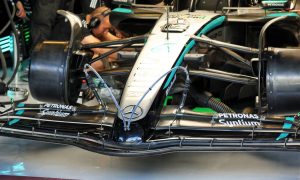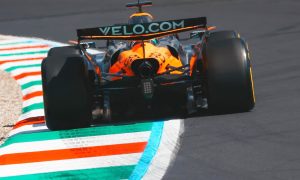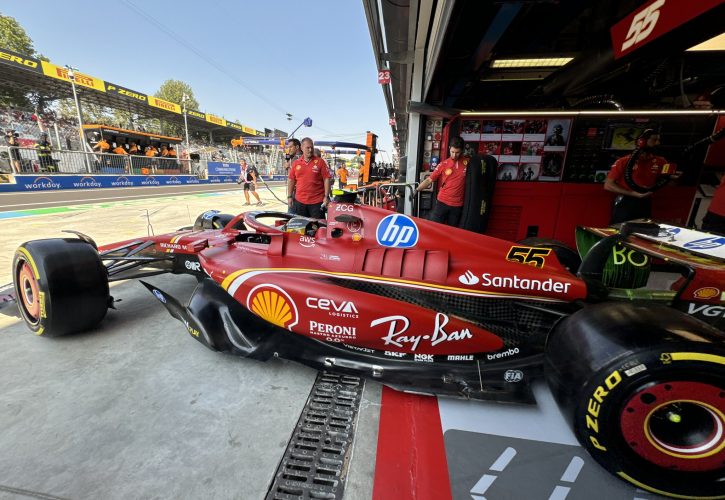
As it hinted ahead of its home race, Ferrari has implemented a healthy number of updates on its SF-24 for this weekend’s Italian Grand Prix in a bid to address its car’s lingering weaknesses.
Overall, all F1 teams have introduced changes to their contenders, although many modifications are circuit specific and cater to Monza’s low-downforce environment.
Here is our comprehensive rundown of the technical updates for each outfit.
Ferrari has modified the front wing on its SF-24 with a lower downforce configuration and redesigned flaps to provide the optimal aero balance for Monza's specific characteristics. The nose has also been refined with a repositioned camera to enhance airflow quality, while the mirrors have been shortened for improved flow conditioning.
The floor has undergone significant changes, including redesigned fences, a reshaped boat and tunnel expansion, a modified floor edge with a cutout, and a redesigned diffuser. These modifications aim to improve airflow and reduce losses downstream.
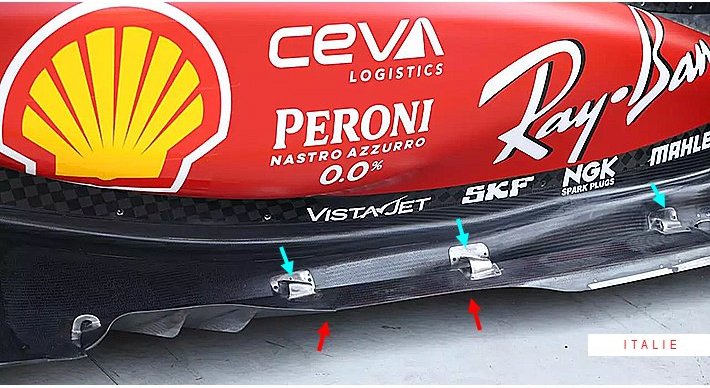
Finally, the rear wing has been updated with lower downforce profiles to suit Monza's layout and efficiency requirements. Both new and carry-over designs will be available for the team to choose from.
Red Bull has implemented two primary technical upgrades for this weekend's Italian Grand Prix, both focused on reducing drag.
The front wing has been modified with a reduced chord on the last element, allowing for a targeted range of aerodynamic balance while maintaining the desired rear wing configuration. Similarly, the rear wing has been adjusted with a reduced chord on the last element, resulting in lower drag levels. These changes are specifically tailored to the characteristics of the Monza circuit.
Over at McLaren, the MCL38’s front corner geometry has been revised to enhance brake cooling performance while maintaining aerodynamic efficiency. The front wing has been modified with a new flap design to provide a wider range of aerodynamic balance options.
Additionally, the sidepods have been reshaped to improve airflow conditioning, particularly towards the rear of the car. These updates are intended to optimize McLaren's performance on the specific demands of the Monza circuit.
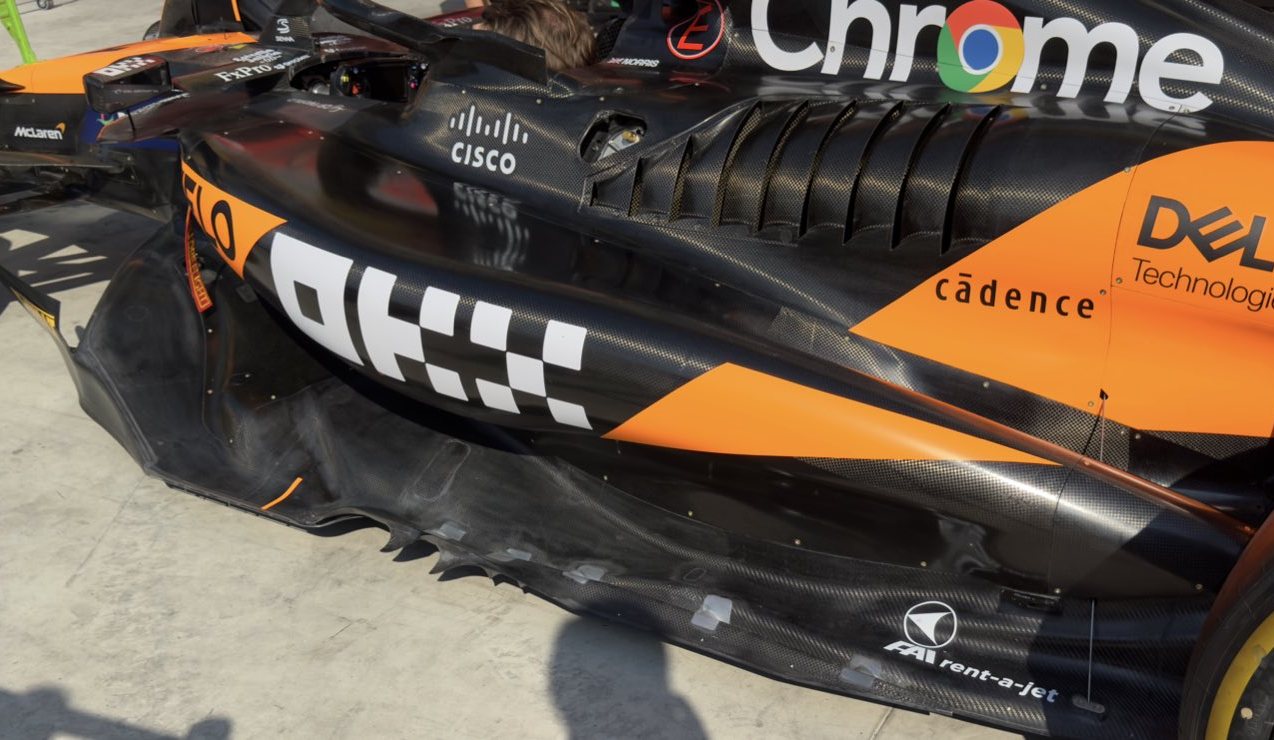
©Courtesy of X/@AlbertFabrega
Mercedes has introduced two rear wing modifications for this weekend's Italian Grand Prix. Both changes are aimed at reducing drag, making them suitable for the high L/D (lift-to-drag) characteristics of the Monza circuit.
The first modification involves a subtle change to the wing tip detail, with the flap tip being backed off and the camber reduced to decrease local downforce and drag. The second change involves a reduction in the chord of the flap, further contributing to lower downforce and drag.
These upgrades are expected to improve the overall efficiency and performance of the W15 silver arrow around the Monza circuit.
Aston Martin has introduced several technical upgrades for this weekend's Italian Grand Prix, focused on adjusting the car's balance and reducing drag.
The front wing features a new flap with reduced incidence, which decreases the aerodynamic load to ensure a better balance with the lower-loaded rear wing used at this event.
In addition, the beam wing has been modified with a smaller design and a short chord second element, reducing loading and working in conjunction with the upper wing to achieve the desired drag range.
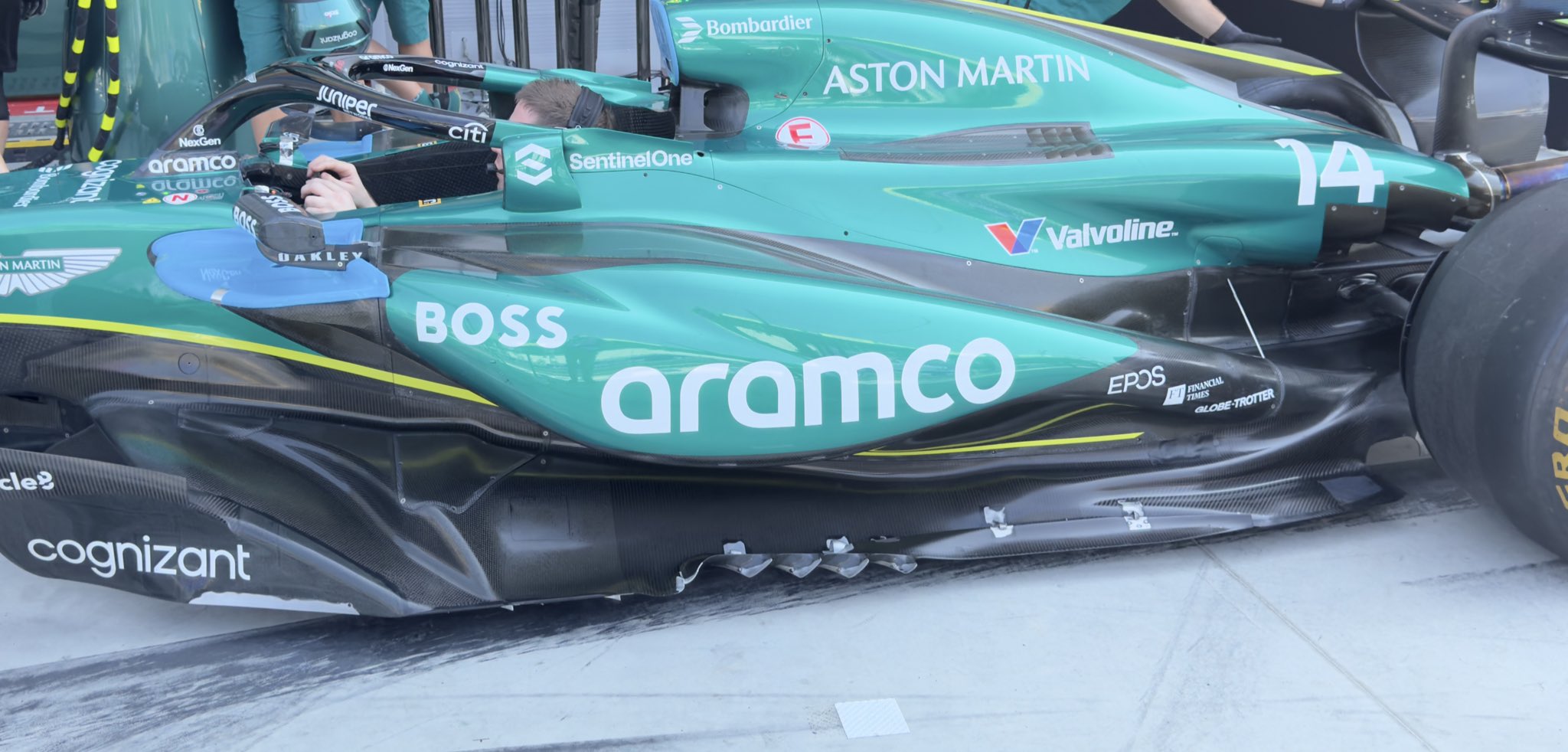
©Courtesy of X/@AlbertFabrega
The rear wing has also been updated with less aggressive sections and offers two flap options, providing a lower load and drag configuration to enhance efficiency specifically for this circuit.
Alpine has introduced a reprofiled front wing flap for this weekend's Italian Grand Prix. The less aggressive design of the flap reduces the load on the wing, allowing for a better balance with the lower rear wing configuration typically used at Monza. This adjustment is intended to optimize the car's performance and efficiency on the high-speed circuit.
Williams has modified the front wing endplate on its FW46, with a portion of the trailing edge removed and the dive plane reoriented. This change reduces drag while also affecting local load and flow structures. For Monza's specific characteristics, this modification is expected to improve lap time.
Additionally, a smaller and reprofiled rearward flap has been made available for the front wing. This revised geometry helps reduce local load, allowing for a better balance with the smaller rear wings used at Monza.
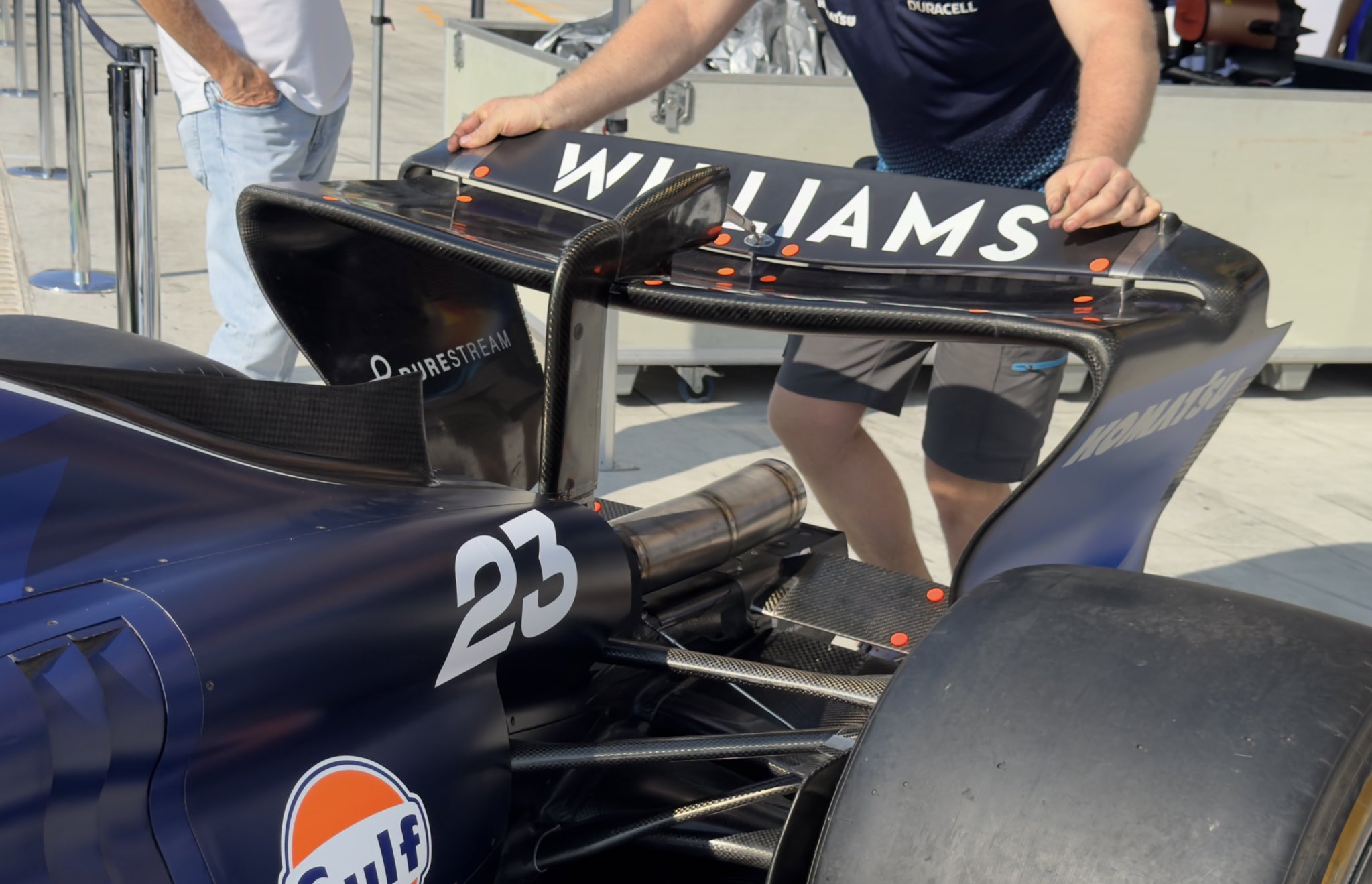
©Courtesy of X/@AlbertFabrega
Finally, an optional trim is available for the rear wing upper flap, which reduces the chord length. This trim can be used to adjust the balance between downforce and drag, providing flexibility to optimize performance based on the specific requirements of the Monza circuit.
RB introduced another series of extensive changes on its VCARB 01. The front wing has been modified with a shorter chord flap, resulting in a reduced overall load. This change is intended to balance the low-drag rear wings used at Monza.
The floor has undergone profile changes to increase local downforce generation and manage flow structures more effectively, minimizing losses as they travel downstream.
The rear wing has been modified with reduced camber, chord, and incidence on the upper elements. This configuration lowers the drag level, making it more suitable for low downforce circuits like Monza.
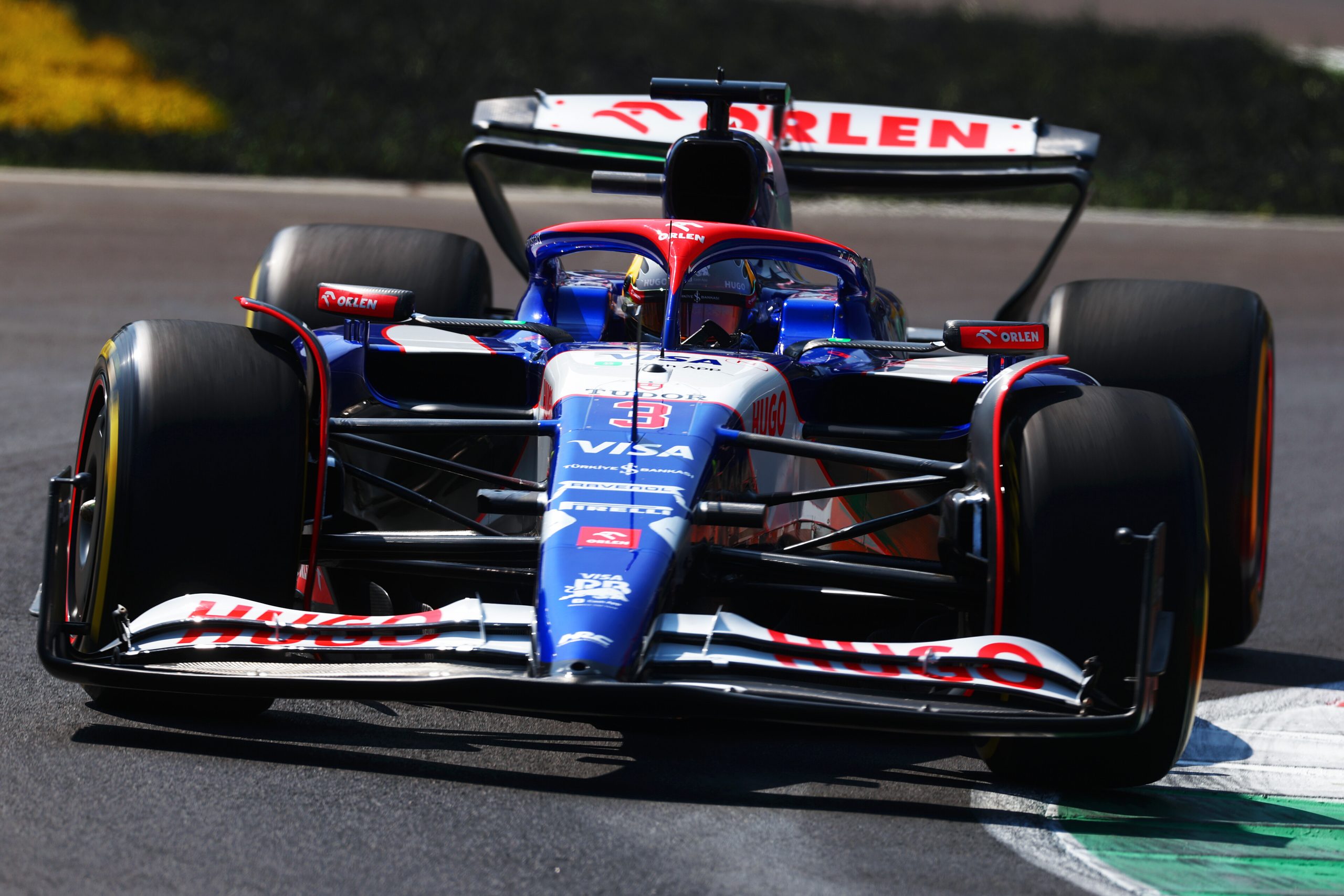
The beam wing has also been adjusted with a reduced chord on the lower element, further reducing the load and allowing for more precise tuning.
Finally, the Halo fairing has been refined to improve flow conditioning and minimize losses downstream. Additionally, the mirrors have been simplified with the removal of specific elements that generate downforce and drag at a less efficient ratio for Monza.
These combined upgrades are aimed at optimizing Visa Cash App RB's performance and efficiency on the high-speed Monza circuit.
Over at Sauber, the front wing has been adjusted with a specific low-balance front wing flap design, reducing the aerodynamic load to match the low-drag rear wing suited for this circuit. To improve local aerodynamic performance, the forward floor body has been redesigned, increasing local load while maintaining clean airflow towards the rear of the car.
Additionally, a minor modification to the diffuser sidewall aims to boost the high-energy flow into the diffuser and better control the airflow around the tires.
The rear wing has also been updated with a new low-drag assembly, which effectively reduces aerodynamic load and can be paired with an optional flap to fine-tune the balance between load and drag.
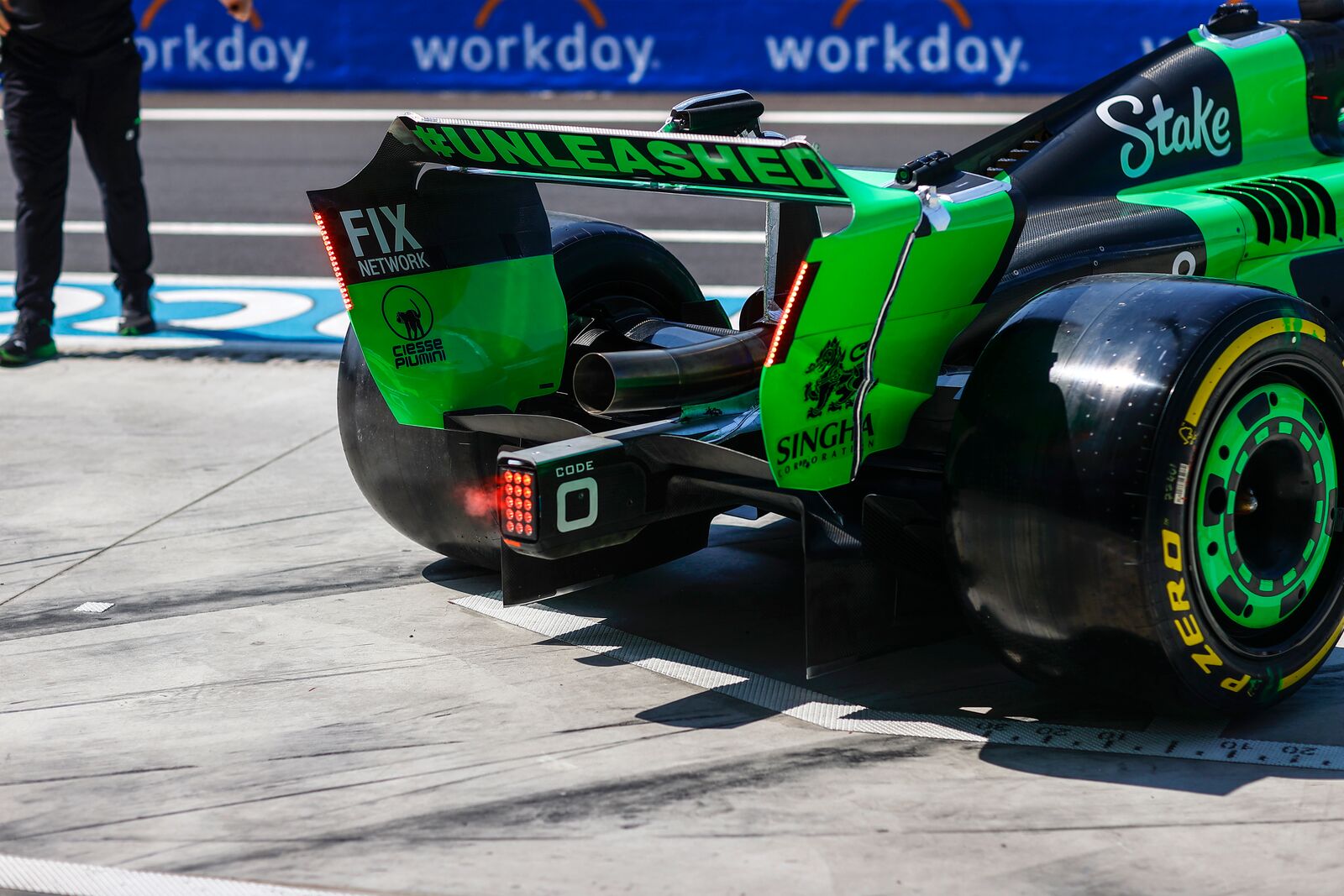
©Sauber
Haas has introduced at Monza a set of technical upgrades designed to optimize their car's performance on the high-speed circuit. The front wing features a circuit-specific, low-camber flap designed to achieve a low balance configuration, complementing the low-drag rear wing introduced at Spa.
Additionally, the front suspension has been updated with re-profiled lower wishbone and pushrod fairings. This modification completes the suspension fairing update that began in Zandvoort with the new front wing. The re-profiling of the suspension components is intended to improve compliance with the airflow, enhancing overall aerodynamic efficiency.
Keep up to date with all the F1 news via Facebook and Twitter





